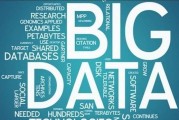标题:大数据的英汉互译正文:大数据是一个在近年内兴起的热门话题,它指的是存储和分析规模庞大、复杂多样的数据集。在英汉互译中,大数据可以称为"bigda...
大数据shuffle什么意思
Big Data is a term used to describe large and complex datasets that traditional data processing applications are not capable of handling efficiently. In the field of Information Technology, Big Data plays a crucial role in providing valuable insights, enabling better decisionmaking, and improving business operations. Here is a breakdown of the key aspects of Big Data in the context of Information Technology:
1. Volume, Velocity, and Variety
Big Data is characterized by the three Vs:
- Volume: Refers to the massive amount of data generated every second from various sources such as social media, sensors, and business transactions.
- Velocity: Represents the speed at which data is generated and collected. Realtime data processing is essential to extract insights and make timely decisions.
- Variety: Includes different types of data such as structured data (like databases), semistructured data (like XML files), and unstructured data (like videos and social media posts).
2. Importance of Big Data in IT
Big Data has several key roles in the field of Information Technology:
- Business Intelligence: Big Data analytics helps organizations gain valuable insights into customer behavior, market trends, and operational efficiency.
- Machine Learning and AI: Big Data is used to train machine learning algorithms and artificial intelligence models for predictive analytics and automation.
- Data Security: Analyzing Big Data helps in detecting cybersecurity threats and protecting sensitive information from unauthorized access.
- Infrastructure Management: IT professionals use Big Data tools to monitor and optimize the performance of complex IT infrastructure.
3. Tools and Technologies
There are various tools and technologies used in handling Big Data in IT environments:
- Hadoop: An opensource framework that allows for the distributed processing of large data sets across clusters of computers.
- Spark: Provides inmemory data processing for faster analytical results and is commonly used for machine learning applications.
- NoSQL Databases: These databases are designed to handle unstructured data and provide high scalability and performance.
- Data Visualization Tools: Tools like Tableau and Power BI help in visualizing complex data sets for easier understanding and decisionmaking.

4. Challenges and Considerations
While Big Data offers significant benefits, there are challenges that IT professionals need to address:
- Data Privacy: Handling large amounts of data raises concerns about data privacy and compliance with regulations like GDPR.
- Data Quality: Ensuring the accuracy and reliability of data is crucial for generating meaningful insights and making informed decisions.
- Scalability: As data continues to grow, IT infrastructure needs to be scalable to handle increasing volumes of data effectively.
- Skills Gap: There is a shortage of professionals with expertise in Big Data technologies, highlighting the need for upskilling and training.
5. Future Trends
The field of Big Data in Information Technology is constantly evolving. Some future trends to watch out for include:
- Edge Computing: Processing data at the edge of the network to reduce latency and improve realtime decisionmaking.
- Explainable AI: Developing AI models that provide transparent and understandable results for better trust and compliance.
- Data Democratization: Making data accessible to nontechnical users through selfservice analytics tools and platforms.
- Blockchain and Data Security: Utilizing blockchain technology to enhance data security and ensure the integrity of Big Data transactions.
Overall, Big Data plays a transformative role in the field of Information Technology, empowering businesses to harness the power of data for innovation, efficiency, and competitive advantage.


